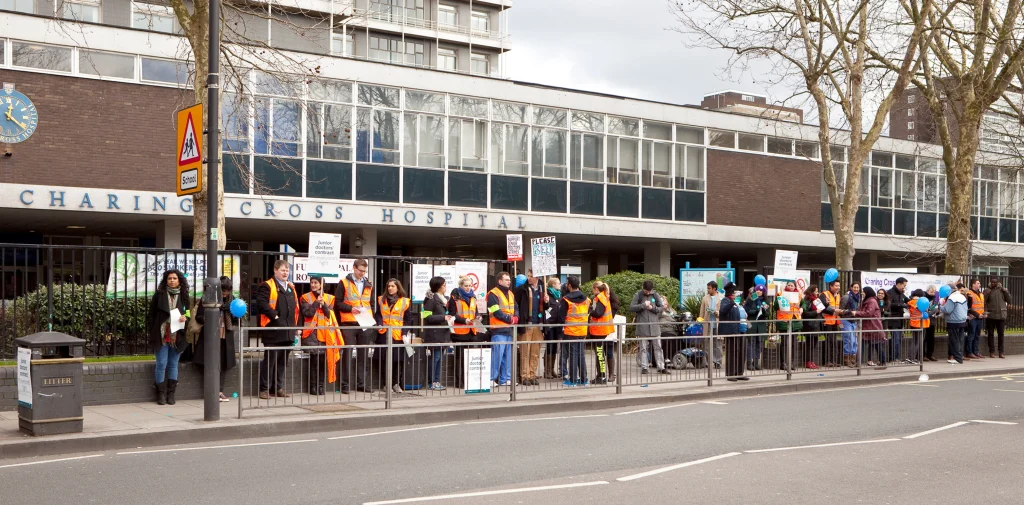Pay Restoration, Not a Pay Rise: Why Junior Doctors Are Demanding Fair Compensation
The British Medical Association’s (BMA) renewed call for real-terms pay restoration for junior doctors has reignited a national conversation about how the NHS values its training-grade workforce. At the heart of this dispute is a long-simmering frustration, not a sudden grievance. The BMA is demanding a 29% increase—an amount representing the real-terms decline in junior doctor pay since 2008, not a bonus, not a windfall, but simply a return to previous baselines.

Understanding Pay Restoration
Much of the public debate has mischaracterized the 29% demand as an extravagant pay hike. In reality, this figure is derived from independent economic analysis, which shows that resident doctors’ pay has fallen by around 26% in real terms between 2008 and 2022. This erosion has been exacerbated by years of austerity, inflation, rising student debt, and increasing tax burdens. No other graduate profession in the UK has seen such a dramatic and prolonged decline in starting salaries.
The BMA’s ask is simple: restore pay to its 2008 level. This isn’t about special treatment; it’s about parity, respect, and sustainability. The government has offered some pay uplifts—22% over 2023–25 and an extra 5.4% in 2025–26—but these still fall short of reversing over a decade of financial attrition.
COVID-19: Sacrifice Without Recognition
Junior doctors—often referred to as resident doctors—played a central role during the COVID-19 pandemic. They worked surge rotas, took on redeployments, and managed overloaded wards often without adequate personal protective equipment or rest. Despite these efforts, they received no COVID bonus, no formal recovery time, and no insulation from the economic fallout of pay suppression.
This dispute isn’t only about wages—it’s about how society values sacrifice. When professionals step up during a national emergency, do we reward their contributions or quietly forget them?
Strikes: A Last Resort, Not a First Choice
In July 2025, junior doctors held a five-day strike—one of the longest in NHS history—after 90% voted in favour of industrial action on a 55% turnout. NHS leaders warned of service disruption, and patient care was indeed affected. But the broader point remains: underinvestment in the medical workforce is already causing daily harm—longer wait times, staff shortages, and deteriorating care quality.
Doctors do not strike lightly. Every day on the picket line is a day lost for training and clinical service. But for many, it has become the only remaining tool to demand meaningful dialogue after years of stalled progress.
The Structural Crisis Behind the Dispute
This dispute reflects a deeper crisis in NHS workforce planning. For years, the system has relied on junior doctors’ goodwill, flexibility, and overtime to maintain care delivery. Chronic rota gaps, high vacancy rates, and intense workloads have led to widespread burnout, early exits from training, and even emigration.
The result? Nearly three-quarters of junior doctors now opt out of the NHS pension scheme—not due to ignorance, but economic necessity. Many feel undervalued, overworked, and alienated from the very system they serve.
If junior doctors continue to feel financially and professionally abandoned, the future pipeline of consultants, GPs, and specialists will weaken. The NHS will grow more dependent on locums, overseas recruitment, and costly agency staffing.
A Path Forward: Phased Solutions and Real Commitment
The government insists it will not meet the 29% demand in full this year. But the BMA has shown willingness to compromise, suggesting a phased restoration plan. This opens the door to a negotiated solution—if both sides engage constructively.
Such a settlement could include not only staged pay increases but also systemic improvements: protected training time, fairer pension structures, and modernized rostering practices. Creativity is possible, but only if ministers accept the core principle that resident doctors deserve more than symbolic praise.

Conclusion: Invest in the Workforce, Invest in the NHS
This is not a dispute rooted in greed. It is about professional dignity, fair compensation, and the survival of the NHS workforce. Junior doctors are the backbone of the health service—its future consultants, leaders, and innovators.
If the government is serious about improving patient care, tackling NHS backlogs, and rebuilding morale, it must begin by treating its junior doctors not as a cost to be contained but as an investment in the future of healthcare in Britain.

